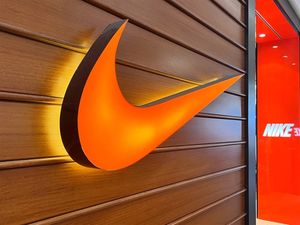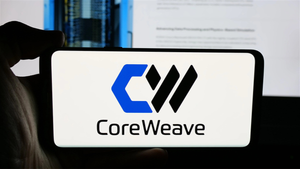SHERIDAN, WY / ACCESS Newswire / September 17, 2025 / In a world where customers screen calls, skim emails, and set "Do Not Disturb" by default, the channels that still break through have two things in common: they're respectful and measurable. Drop Cowboy positions itself squarely in that gap. The company offers a multichannel outreach platform that blends ringless voicemail, SMS, voice broadcast, call tracking, and workflow automation-aimed at teams that need enterprise-grade capabilities without the overhead of enterprise software.

At its core is ringless voicemail, a delivery method that places a pre-recorded message into a recipient's voicemail inbox without triggering a live call. For time-sensitive updates-limited-time offers, appointment reminders, service alerts, fundraising pushes-this approach can feel like a nudge rather than a demand for attention. Advocates say this drives higher listen-through and response rates because the experience is asynchronous and less intrusive. Skeptics point out that results depend heavily on consent, list quality, and message relevance. Drop Cowboy's pitch acknowledges both: use ringless voicemail thoughtfully, measure the outcomes, and automate the follow-up across channels.
Beyond voicemail, the platform bundles templated SMS campaigns, voice broadcasts, and dynamic call tracking. Marketers can build sequences that start with voicemail, wait for engagement, then branch into text or a scheduled call based on behavior. Operations teams wire in rules that notify a rep when a lead listens to a message, automatically update a CRM stage, or trigger a calendar invitation after a reply. The promise is simple: save human time for human interactions, and let the system handle the routine steps between touchpoints.
Measurement is a centerpiece. Drop Cowboy consolidates delivery, listen, reply, and conversion metrics into dashboards that are understandable at a glance and granular enough for power users. Built-in A/B testing encourages teams to compare scripts, timing windows, and cadence lengths. Call tracking with dynamic numbers attributes inbound activity to a specific campaign, ad group, or even a keyword, clarifying what actually moves the needle. For leaders under pressure to justify spending, the closed-loop reporting aims to make "what worked?" a question answered with data, not anecdotes.
Integration is where outreach platforms often win or lose. Drop Cowboy supports Bring Your Own Carrier options for organizations that want to keep existing telecom relationships while layering the company's automation on top. APIs and webhooks connect campaigns to CRMs, help desks, data warehouses, and analytics stacks. The practical effect: a marketing manager can segment audiences based on first-party data, launch a campaign, and push outcomes back to the system of record without swivel-chair work. For smaller teams, native connectors and CSV imports reduce setup friction.
Compliance is non-negotiable in modern messaging. The platform emphasizes opt-in capture, transparent opt-out handling, and labeling that aligns with evolving carrier and regulatory expectations. Controls for throughput, quiet hours, geographic throttling, and content safeguards help teams avoid common mistakes. On the carrier side, deliverability-minded features-like route health monitoring and retry logic-aim to keep messages flowing when networks are busy or rules shift. None of this removes a brand's legal obligations, but it gives operators the rails to run a compliant program at scale.
Who uses a toolkit like this in practice? E-commerce brands rely on it for back-in-stock alerts, flash sales, and abandoned-cart recovery that doesn't require more ad spend. Professional services firms schedule renewals and appointment reminders to cut no-shows. Real estate teams use after-hours lead responses that set expectations and book the next step. Nonprofits condense long emails into short, timely updates that mobilize donors. On the receivables side, respectful, consent-forward messages keep lines of communication open while reducing agent hours. In all cases, the advantage isn't just the channel-it's the choreography of channels arranged around a clear outcome.
Onboarding aims for speed. Users import contacts, define segments with point-and-click filters, select a campaign "recipe," and customize scripts. From there, iteration is encouraged: test a shorter message, nudge the send window later in the day, try a voicemail-first sequence against a text-first control. Because the platform exposes outcome metrics quickly, teams can scale what works and retire what doesn't without waiting for quarter-end retrospectives.
It's useful to place Drop Cowboy in the broader competitive map. Traditional virtual-number products focus on phone system replacement. Email and SMS suites lead with text channels and add voice as an afterthought. Call centers prioritize agent tooling and live conversations. Drop Cowboy sits at the intersection, oriented toward asynchronous, low-friction touchpoints-ringless voicemail first, with SMS and voice broadcast as complements-wrapped in automation and attribution. That positioning resonates with resource-constrained teams that need to look bigger than they are, but still want a stack they can actually operate day to day.
Of course, technology can't compensate for poor strategy. The best outcomes still rely on honorable lists, explicit consent, empathetic copy, and a cadence that respects the recipient's time. Organizations new to ringless voicemail should start with high-intent audiences-existing customers, recent hand-raisers-before expanding to colder segments. Keep scripts concise, conversational, and useful. Offer a clear next step, and make "no thanks" simple. In regulated industries, align outreach with counsel and internal policy before you press "go." The platform supplies the rails; operators decide where the train should run.
For leaders who care about cost control, there's a practical angle, too. Outreach spend often gets trapped in headcount, ad budgets, and an alphabet soup of point tools. A channel like ringless voicemail carries the message directly; pairing it with targeted SMS can reclaim revenue that would otherwise require more paid media. Meanwhile, automation replaces repetitive manual work-freeing teams to focus on high-value conversations instead of list pulls and status changes. When the CRM, the messaging layer, and the call attribution are in sync, the feedback loop tightens and waste drops.
Roadmaps in this category tend to converge: richer personalization, smarter send-time optimization, and more prescriptive analytics. Expect vendors to lean into creative assistance and experiment design so non-experts can launch credible tests. Expect deeper consent intelligence, with upstream safeguards that stop risky sends before they happen. And expect tighter integrations so outcomes flow seamlessly into revenue reporting. The north star is not "more messages"-it's more helpful messages that earn attention because they respect it.
The bottom line: outreach has to evolve with consumer behavior. People want control over when and how they engage. Brands want clarity on what works and a responsible way to scale it. Drop Cowboy's bet is that ringless voicemail, coupled with automation, SMS, and call tracking, provides a modern, measurable path through that tension. For teams that need to initiate more conversations without burning goodwill-or their budget-the platform offers a pragmatic playbook: be concise, be considerate, and instrument everything.
Media Contact:
Contact name: Drop Cowboy
Website: https://www.dropcowboy.com/
Email: info@dropcowboy.com
SOURCE: Drop Cowboy
View the original press release on ACCESS Newswire





